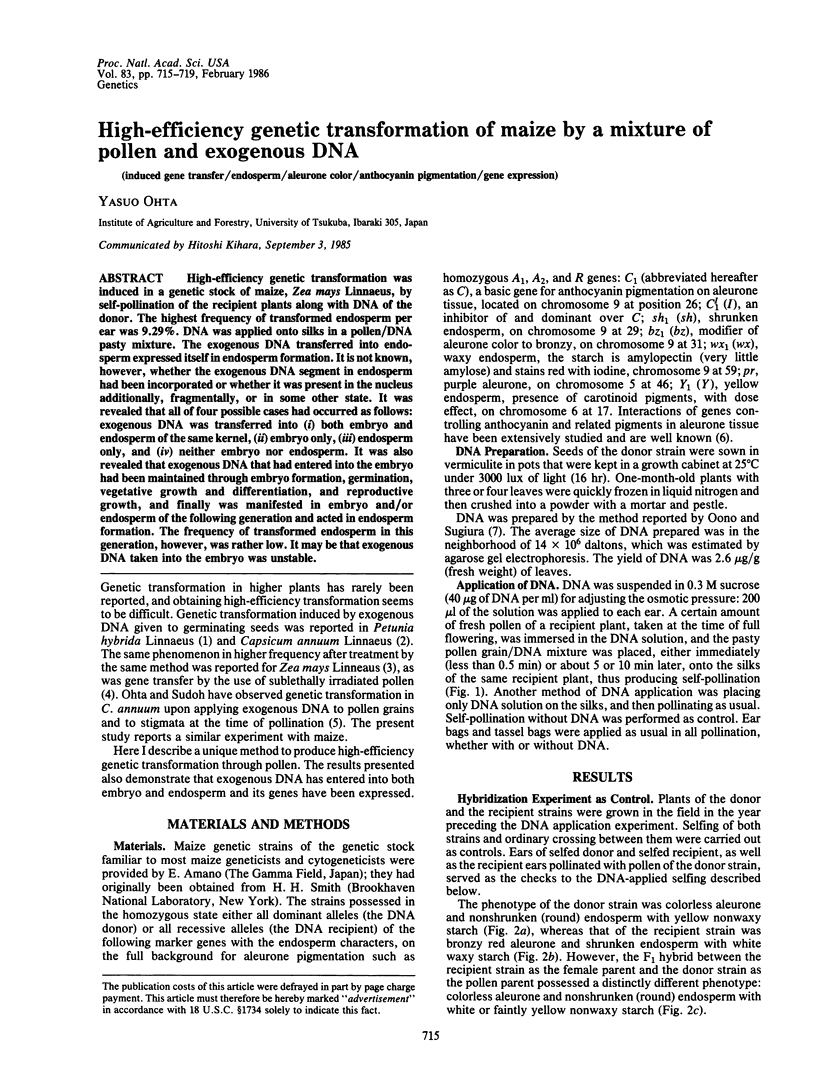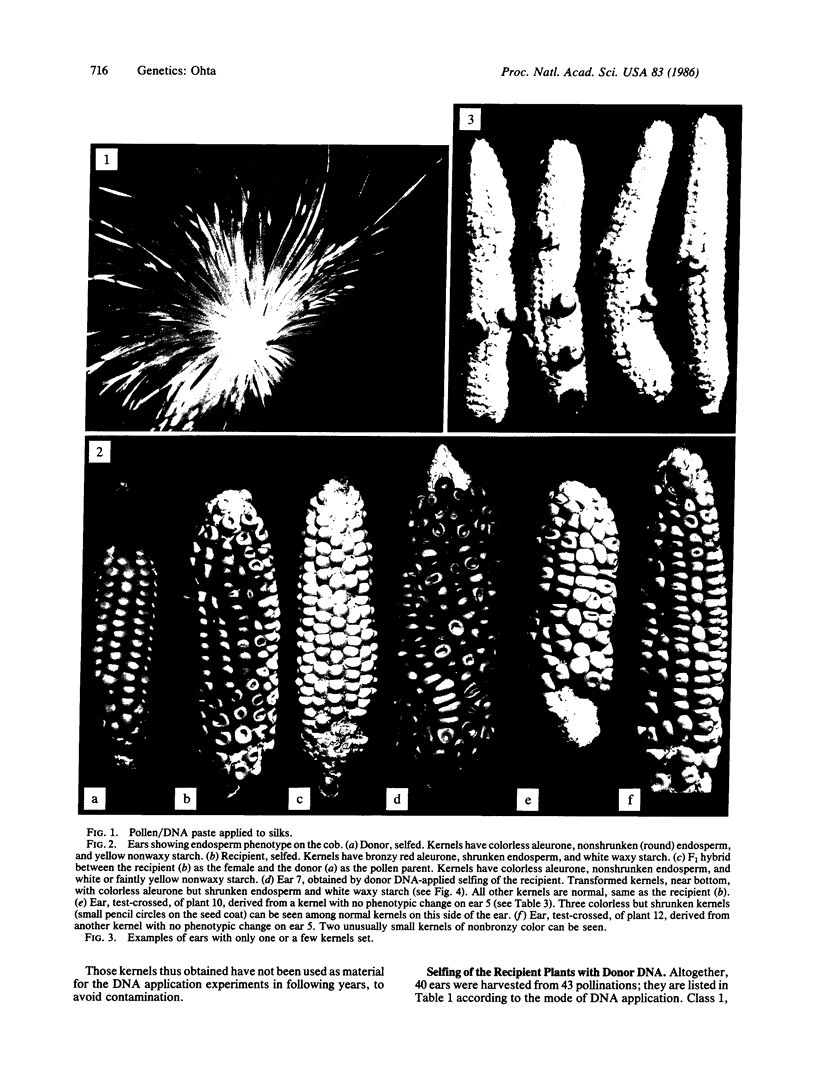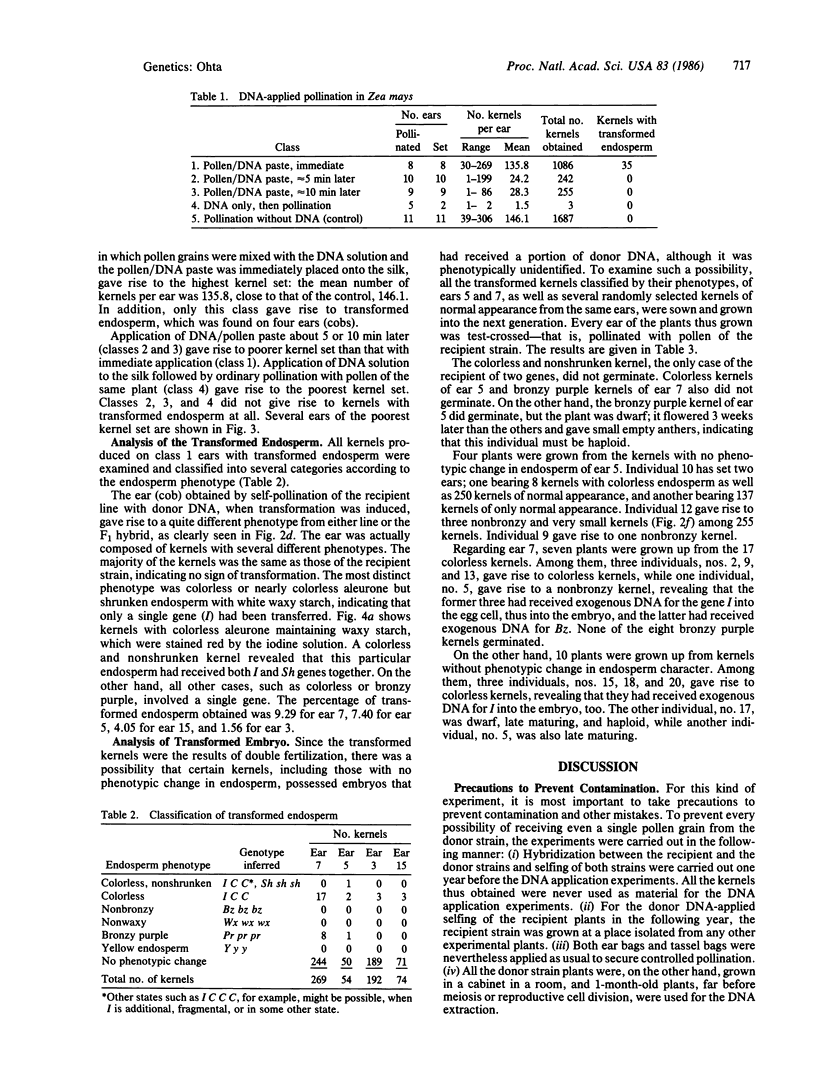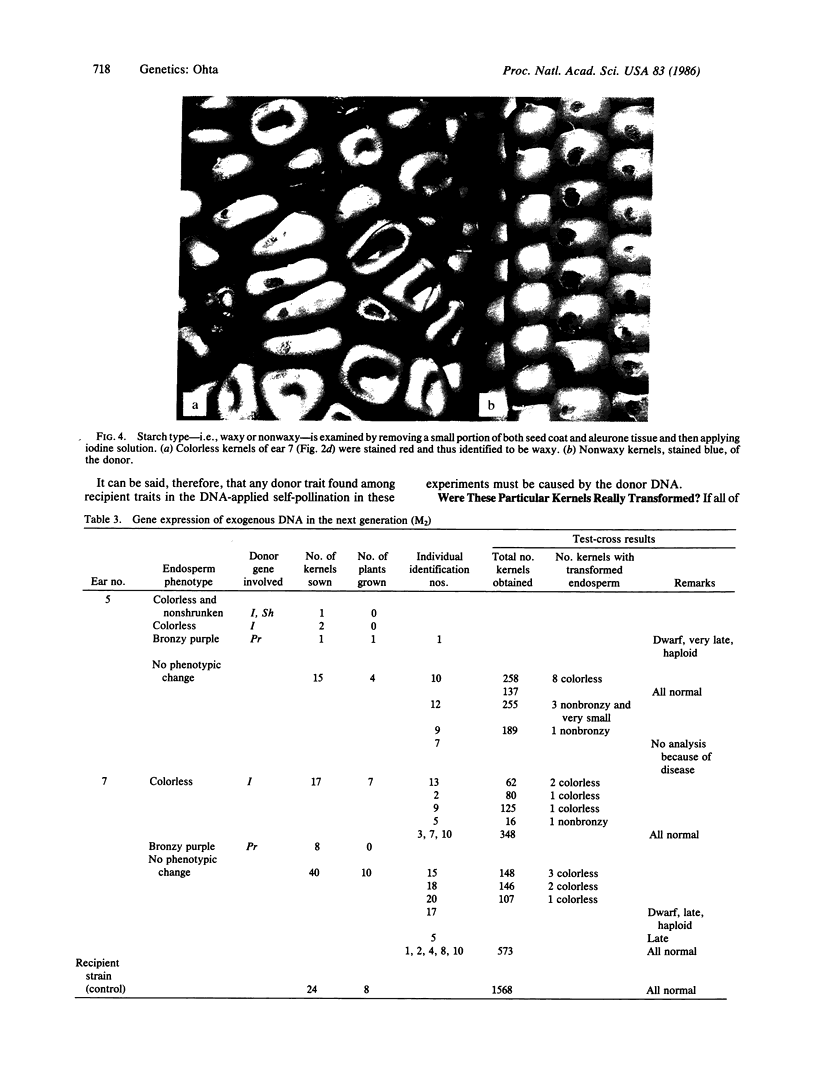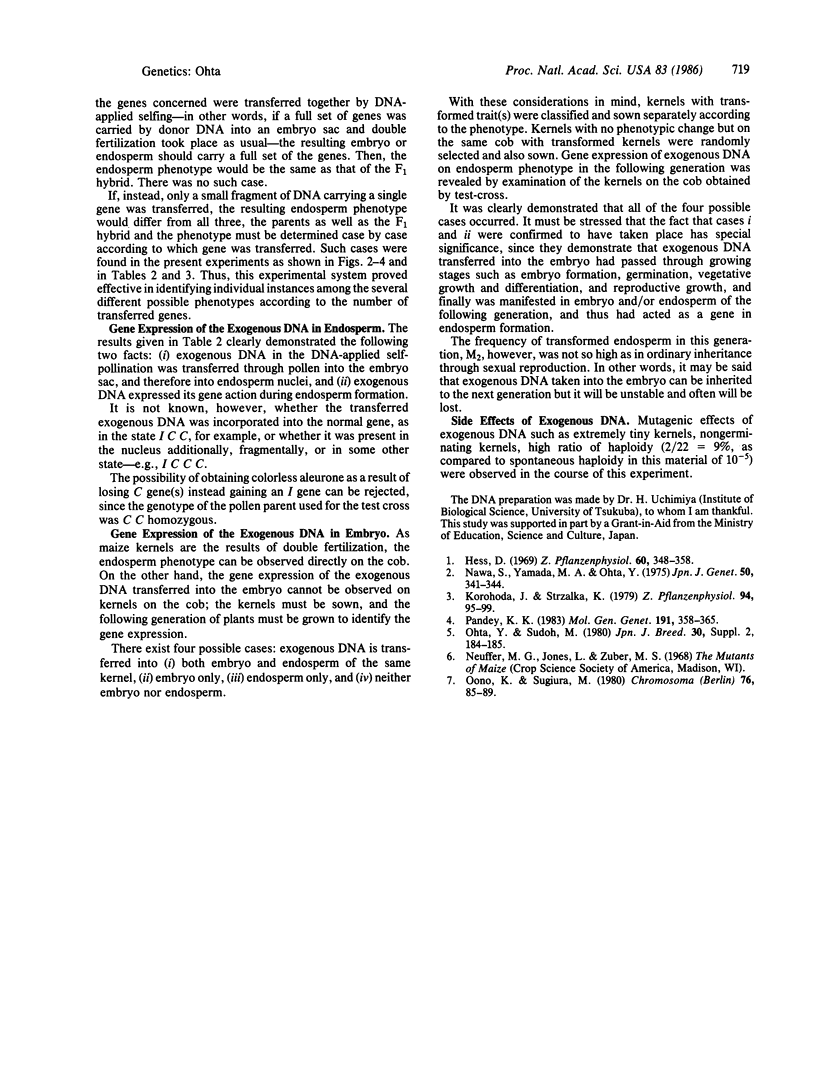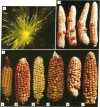Abstract
High-efficiency genetic transformation was induced in a genetic stock of maize, Zea mays Linnaeus, by self-pollination of the recipient plants along with DNA of the donor. The highest frequency of transformed endosperm per ear was 9.29%. DNA was applied onto silks in a pollen/DNA pasty mixture. The exogenous DNA transferred into endosperm expressed itself in endosperm formation. It is not known, however, whether the exogenous DNA segment in endosperm had been incorporated or whether it was present in the nucleus additionally, fragmentally, or in some other state. It was revealed that all of four possible cases had occurred as follows: exogenous DNA was transferred into (i) both embryo and endosperm of the same kernel, (ii) embryo only, (iii) endosperm only, and (iv) neither embryo nor endosperm. It was also revealed that exogenous DNA that had entered into the embryo had been maintained through embryo formation, germination, vegetative growth and differentiation, and reproductive growth, and finally was manifested in embryo and/or endosperm of the following generation and acted in endosperm formation. The frequency of transformed endosperm in this generation, however, was rather low. It may be that exogenous DNA taken into the embryo was unstable.
Keywords: induced gene transfer, endosperm, aleurone color, anthocyanin pigmentation, gene expression
Full text
PDF